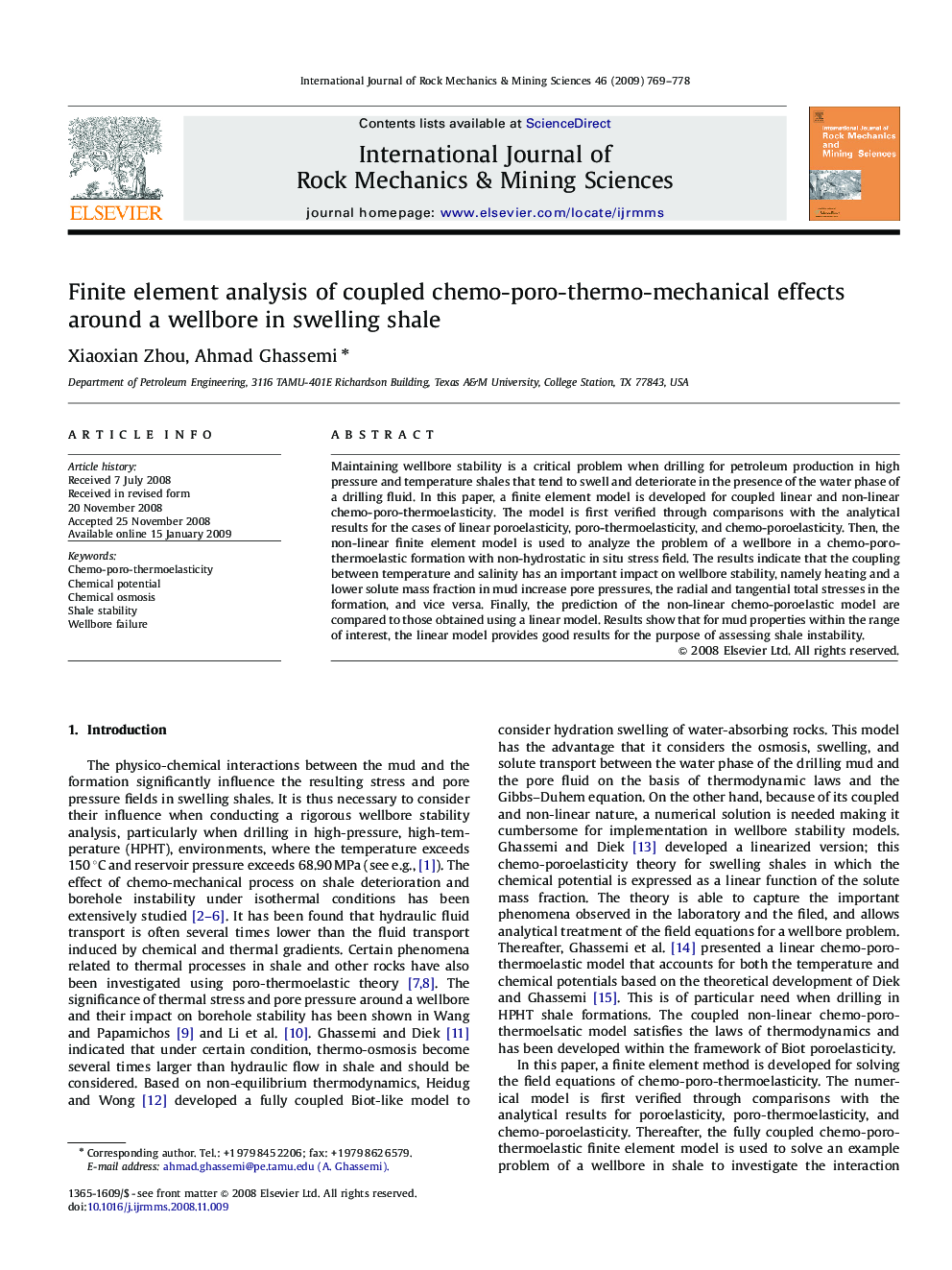| Article ID | Journal | Published Year | Pages | File Type |
|---|---|---|---|---|
| 810029 | International Journal of Rock Mechanics and Mining Sciences | 2009 | 10 Pages |
Maintaining wellbore stability is a critical problem when drilling for petroleum production in high pressure and temperature shales that tend to swell and deteriorate in the presence of the water phase of a drilling fluid. In this paper, a finite element model is developed for coupled linear and non-linear chemo-poro-thermoelasticity. The model is first verified through comparisons with the analytical results for the cases of linear poroelasticity, poro-thermoelasticity, and chemo-poroelasticity. Then, the non-linear finite element model is used to analyze the problem of a wellbore in a chemo-poro-thermoelastic formation with non-hydrostatic in situ stress field. The results indicate that the coupling between temperature and salinity has an important impact on wellbore stability, namely heating and a lower solute mass fraction in mud increase pore pressures, the radial and tangential total stresses in the formation, and vice versa. Finally, the prediction of the non-linear chemo-poroelastic model are compared to those obtained using a linear model. Results show that for mud properties within the range of interest, the linear model provides good results for the purpose of assessing shale instability.
